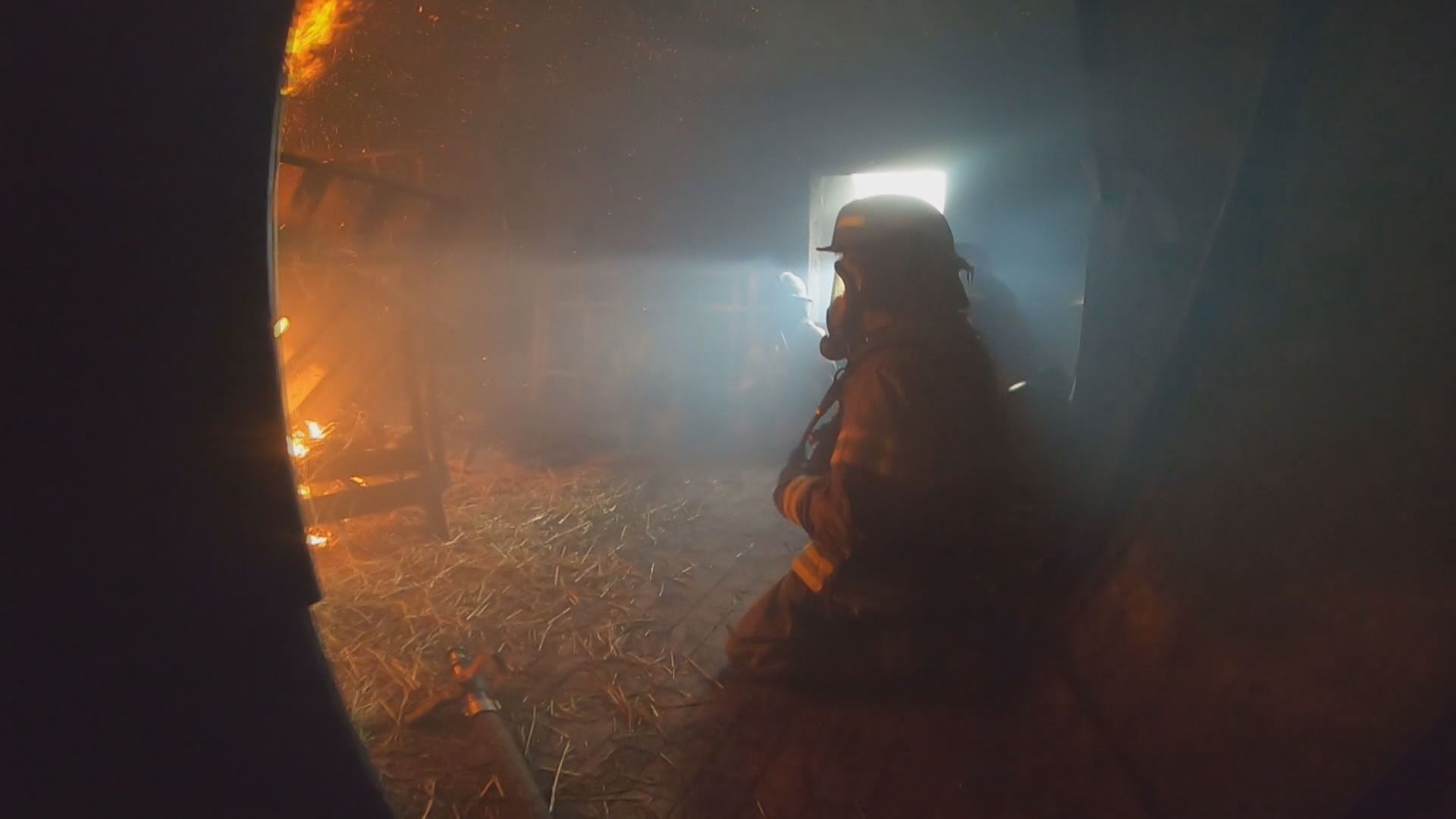SYLVANIA, Ohio — An average person can see two or three traumatic incidents in their life, while first responders can see more than 180, according to First H.E.L.P., a national organization that works to reduce mental health stigma among first responders.
"When it's something that you can personally relate to, it's a lot harder to get over," Jessica Vargas, a dispatcher with the Wood County Sheriff's Office, said.
Sara Shaw, an officer with the Oregon Police Department, said her husband and fellow northwest Ohio police officer, Mike, was triggered during a raid when a toy -- the same one owned by their daughter -- went off during a raid.
He died by suicide in October 2020.
Now, WTOL 11 is sharing the story of former Sylvania firefighter Aaron Frye, who left his job after 23 years.
"You see a lot of stuff that no one should ever have to see in their life," Frye said. "I worked on the life squad, the medic units, the engines, the ladder truck, the tiller truck. I was the department safety officer so I responded to every fire, every major crash, every extrication."
Each call brought its own battle, with some tougher than others. But, the lasting effects of each traumatic call he responded to built up.
With "repeated exposure to certain things, you get numb," Frye said. "And for the most part I just didn't care anymore. 'Oh look, there's something else ... glad it's not me."
He would often bury these traumatic incidents in his mind and move on.
A few years ago, Frye took time off to take care of his wife, Laura Frye, after she got surgery. He thought this time off would be just that, time off.
"As it was getting close to me going back, I told (Laura), 'I can't. I'm not going back. I can't do it,'" Frye said.
He got in contact with the International Association of Fire Fighters Center of Excellence, just outside of Washington D.C. in Maryland, seeking help.
Frye was there for 35 days.
"The one thing I learned is that there is no 'atypical' PTSD," Frye said. "You never discount anyone's story because everyone is different. I talked to guys that were there the first day that could barely make a sentence. I was having trouble making sentences."
When he returned home, Laura said her and her husband had trouble finding the right help. Most resources they found focused on military service members and veterans with PTSD.
"I think with the militar,y they are immersed in their situation," Laura said. "They're overseas and that's their life 24 hours a day, seven days a week for however long they're there."
But for first responders like her husband, it's a repeated back-and-forth between home and trauma.
"These guys go in, they experience this and then they go home and they're in their safe space. And then its right back to the trauma, and then they're home again, and then they're back in the trauma, and then they're home again," Laura said.
Departments like Toledo Fire & Rescue and Toledo Police do have employee assistance program coordinators, though, who direct first responders to specialists and counselors.
There are also multi-day seminars held by organizations like Ohio ASSIST.
"We have firefighters, we have EMS, corrections, we can have law enforcements, communications, all of those entities can come to this seminar because we recognize that this trauma is across the board," Molly Harris,a lieutenant with the Ohio State Highway Patrol and spokesperson for the program, said.
Here are more resources in Ohio:
"Critical incidents or traumatic incidents are different for everybody, so what would possibly be a critical incident to me might not be a critical incident to you," Harris said.
Each call can impact every first responder differently.
"It could be one big incident that is a bear that the trooper might have to deal with or the officer has to deal with, or it could be over the career that everything just keeps adding up," Dan Vickey, a chaplain with OSHP District Two, said.
For Frye, it was the latter. The traumatic incidents added up over time until he realized he couldn't return to the fire department.
For first responders who have children of their own, responding to incidents involving children can be especially traumatizing.
"We had handled a juvenile fatal that was really difficult for me because I have a child that's around the same age," Vargas said.
Harris said when she was the OSHP post commander for the Marysville post, there was a two-year-old struck by a vehicle. At the time, she had a two-year-old of her own.
Vickey said said there is a saying for first responders who bottle up emotional trauma: "We use the phrase 'a backpack ... We put stuff in our backpack and it eventually gets full, too heavy to carry, so we have to empty some of the things out of that backpack."
Oftentimes, recognizing that the backpack is full can be the hardest part. There's a fear among first responders that they can be viewed as "weak" if they seek help.
Harris said stigma is one of the biggest barriers that first responders experience.
She said a common fear among law enforcement officers is if someone finds out they are struggling with their mental health, their gun and badge will be taken away.
Harris remembers when she first started in the police academy, she was told the stress of the job can shorten her lifespan. But now that it's being recognized, there are steps being taken to do something about it.
For Aaron Frye, there's an important message to be taken away about first responders struggling with PTSD.
"We're here to save lives and if we can't take care of ourselves how are we going to take care of anyone else," Aaron Frye said.

